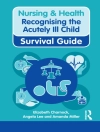Aging research on the human eyes crosses all areas of ophthalmology and also relies upon biological, morphological, physiological, and biochemical tools for its study. In Age-Related Changes of the Human Eye, the authors review all aspects of human eye aging. In addition to descriptions of age-related changes in almost all the structures of the human eyes, the authors also include interesting accounts of personal experiments and data. The ease of use and versatility of this volume makes it an essential tool for students and graduate students as well as post-doctoral and/or professional ophthalmologists. Age-Related Changes of the Human Eye provides the reader with an exhaustive panorama of what happens during aging in the eye, thus making an important contribution to the understanding of the physiology and pathology of eye diseases.
Table of Content
Aging as Risk Factor in Eye Disease.- Age-Related Changes of the Eyelid.- Aging Effects on the Optics of the Eye.- Aging of the Cornea.- The Aging of the Human Lens.- The Extracellular Matrix of the Aged Human Trabecular Meshwork: Changes of Glucosaminoglycans.- Glial and Mobile Cells in the Iris of the Aging Human Eye.- Age-Related Diseases of the Vitreous.- Age-Related Changes and/or Diseases in the Human Retina.- Aging of the Retinal Pigmented Epithelium.- The Aging of the Choroid.- Age-Related Macular Degeneration I: Types and Future Directions.- Age-Related Macular Degeneration II: Idiopathic Macular Holes.- Age-Related Macular Degeneration III: Epiretinal Membranes.- Macular Degeneration: Ultrastructural Age-Related Changes.- Non-Exudative Macular Degeneration and Management.- Treatment of Intraocular Pressure in Elderly Patients.- Aging of the Lachrymal Gland.- The World According to Blink: Blinking and Aging.- Age-Related Changes in the Oculomotor System.- Rehabilitation of Low Vision in Aged People.- Many Suggestions to Protect the Eyes in Aging People.












